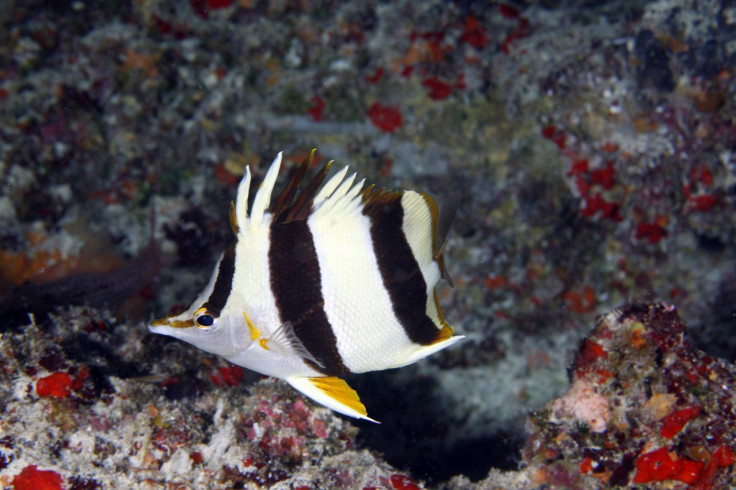'Glamorous' new fish species discovered off Hawaii in world's largest ocean reserve
Papahānaumokuākea Marine National Monument is a protected area.

A new species of butterflyfish has been discovered in the deep reefs of Papahānaumokuākea Marine National Monument, an area in the remote northwest of the Hawaiian Islands which President Obama recently expanded, making it the world's largest protected ocean reserve.
The fish was identified by scientists from the Bishop museum in Honolulu and the National Oceanic and Atmospheric Administration (NOAA).
"Butterflyfish are the glamour fish of the coral reefs," said Richard Pyle, Bishop Museum scientist and lead author on a paper reporting on the discovery of the fish.
"They are colourful, beautiful, and have been very well-studied worldwide. Finding a new species of butterflyfish is a rare event."
The fish was discovered in deep coral reefs, known as mesophotic coral ecosystems, or "the coral-reef twilight zone".
They occupy depths of around 50-150 metres in one of the least-explored marine ecosystems: it is too shallow for most submersible-based exploration and too deep for most divers to reach.
"Discoveries such as this underscore how poorly explored and how little we know about our deep coral reefs," said Randall Kosaki, NOAA scientist and co-author of the study. "Virtually every deep dive we do takes place on a reef that no human being has ever seen."
The species was actually first noticed in a video taken by a manned submersible more than 20 years ago. It was recognised as a potential new species, however, it took many years before technical divers using advanced breathing equipment were able to traverse the extreme depths of the reef and collect specimens that would allow for proper documentation of the new species.
The fish has been named Prognathodes basabei after a veteran local diver, Pete Basabe, who has assisted with the collection of reef fishes for numerous scientific ventures. Basabe played an important role providing support for the dives that collected the first specimens of the new species.
"This new discovery illustrates the conservation value of very large marine protected areas," said Kosaki. "Not only do they protect the biodiversity that we already know about, they also protect the diversity we've yet to discover. And there's a lot left to discover."
© Copyright IBTimes 2025. All rights reserved.





















